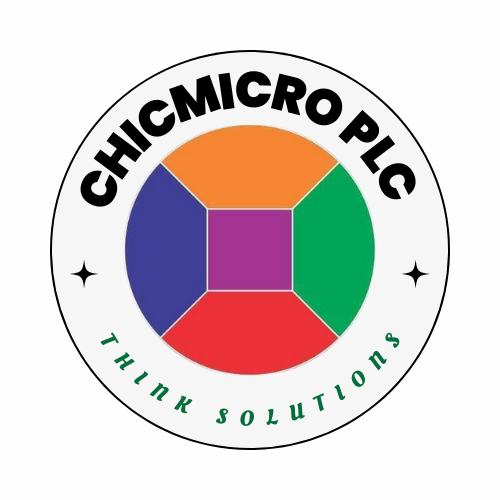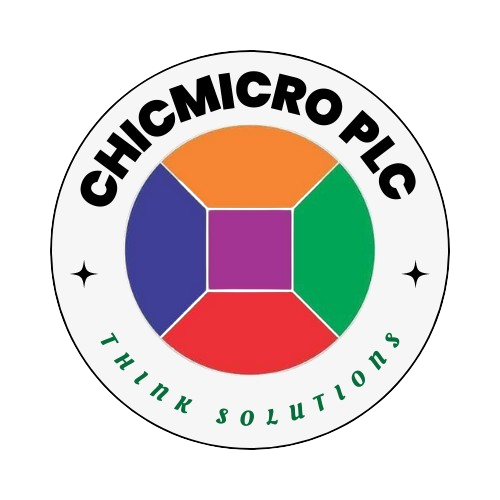
Research the Market
Conducting thorough market research is a crucial first step when starting a cleaning business. Understanding the landscape in which you plan to operate will not only inform your business model but will also help you tailor your services to meet the specific needs of your target customers. This initial phase involves identifying your potential clientele, determining the services they require, and examining the prevailing demand in various regions.
Begin by identifying your target customers. Depending on the type of cleaning services you intend to offer—residential, commercial, industrial, or specialized—your customer demographic will vary significantly. For instance, residential cleaning services may cater to busy families or elderly individuals, while commercial cleaning could be focused on businesses, schools, or healthcare facilities. Knowing who your customers are will guide the development of your marketing strategies and service offerings.
Next, it is crucial to analyze your competitors. Examine local cleaning businesses to understand their service range, pricing, and client feedback. Visit their websites, read customer reviews, and assess their social media presence. This competitive analysis will provide insight into what works and what does not in your area, enabling you to differentiate your cleaning business effectively. Look for gaps in the market where you can provide superior services or innovative solutions.
Additionally, research the demand for various cleaning services in your target regions. Seasonal trends may influence the need for certain types of cleaning, whereas economic conditions could affect spending patterns. Utilize surveys, local industry reports, and online resources to gather pertinent data about customer preferences and behaviors. As a tool for further understanding market dynamics, consider consulting forums or surveys related to cleaning services. Analyzing this information will allow you to establish a solid foundation for your cleaning business.
Creating a Business Plan for Your Cleaning Business
A comprehensive business plan is an essential foundation for starting a cleaning business. It serves not only as a roadmap for your venture but also as a critical tool for securing funding and guiding your growth. To ensure your business plan is effective, consider including several key elements that will clearly communicate your vision and operational strategy.
First, set clear objectives that define your cleaning business’s goals. Identify short-term and long-term targets, such as revenue milestones, customer acquisition ratios, and market share expectations. These objectives will provide structure and direction as you scale your operations.
Next, outline your business structure. Determine whether your cleaning business will operate as a sole proprietorship, partnership, or limited liability company (LLC). Each structure has its implications for liability, taxation, and management. Clearly stating your chosen structure in your business plan will help potential investors understand your operational framework.
It is also crucial to detail the services you will offer in your cleaning business. This could include residential cleaning, commercial office cleaning, specialized services like carpet cleaning, or post-construction cleaning. Clearly categorizing your offerings will enable customers to understand your value proposition and help you differentiate your business in a competitive market.
Lastly, include financial projections in your business plan that forecast income, expenses, and potential profits. This section should also address your startup costs, pricing strategy, and break-even analysis. Potential investors will scrutinize these figures, so accuracy is paramount. A well-researched financial plan can significantly increase your chances of obtaining needed funding, thereby propelling your cleaning business towards success.
Securing Necessary Licenses and Insurance
When starting a cleaning business, securing the necessary licenses and insurance is crucial to ensure compliance with local regulations and to protect both your business and the clients you serve. The first step is to research the specific licenses required in your area, as these can vary significantly by state and municipality. Typically, a general business license is needed, along with any special permits that may apply to cleaning services. You may also need to register your business with the appropriate local or state authorities, depending on your structure, whether it’s a sole proprietorship, LLC, or corporation.
In addition to business licenses, it is essential to familiarize yourself with health and safety standards that are applicable to cleaning operations. This may include regulations regarding the use of certain cleaning chemicals, workplace safety measures, and handling of hazardous materials. Compliance with these regulations not only avoids legal issues but also enhances your credibility with potential clients. It’s advisable to consult a legal expert or local business advisor to ensure you fully understand these requirements.
Another critical aspect of establishing your cleaning business is obtaining liability insurance. This type of insurance protects you in the event of accidents, property damage, or injuries that may occur during your service. Having liability coverage can provide peace of mind to both you and your clients, solidifying trust in your professional service. Choosing the right insurance policy involves assessing the level of coverage that is appropriate for your specific cleaning services and understanding the claims process.
Navigating the application processes for licenses and insurance can be daunting, but local small business administrations often offer resources to assist entrepreneurs. Utilizing these resources can simplify your journey to becoming a legally compliant and insured cleaning service provider.
Developing a Competitive Pricing Strategy for Your Cleaning Business
Establishing a pricing strategy is a critical step when launching a cleaning business, as it directly impacts profitability and customer acquisition. To create an effective pricing model, start by analyzing the types of services you plan to offer, such as residential cleaning, commercial cleaning, or specialized services like carpet cleaning or window washing. Each service category may demand different pricing due to varying labor intensity and resource needs.
Next, conduct thorough market research to understand prevailing rates in your area. Analyze your competitors’ pricing structures by reviewing their service packages and customer reviews. This will provide valuable insights into what potential customers may be willing to pay, allowing you to position your cleaning services competitively. It is essential to find the balance between attracting clients and ensuring your prices cover your operating costs while allowing for a healthy profit margin.
When formulating your pricing strategy, consider incorporating different pricing packages tailored to various customer needs. For instance, create a basic package for regular cleaning, a premium package that includes deep cleaning services, and discounts for long-term contracts or referrals. Implementing tiered pricing not only appeals to a wider clientele but also rewards customer loyalty, enhancing overall satisfaction.
Additionally, factor in the costs of materials, labor, and overheads in your pricing equation. Calculate the average expenses for cleaning supplies, equipment maintenance, and employee wages to ensure that your prices reflect the operational costs accurately. As you refine your pricing strategy, monitor customer responses and adjust your pricing as necessary to remain competitive and profitable. With a well-thought-out pricing strategy in place, your cleaning business will be positioned for success in an evolving market.
Build Your Brand and Online Presence
Establishing a distinct brand identity is an essential step when starting a cleaning business. A strong brand not only sets you apart from competitors but also communicates your business values and services clearly to potential customers. Begin by selecting a memorable business name that reflects your mission and resonates with your target audience. Conduct thorough research to ensure that the name is unique and not already in use by another cleaning enterprise.
Once you have a business name, the next step is to design a professional logo. This logo will serve as a visual representation of your brand and should be simple yet memorable. Consider hiring a graphic designer or using design tools to create a logo that communicates professionalism and the nature of your services. Moreover, a consistent color scheme and typography can further strengthen your brand identity.
In addition to your brand name and logo, a concise and catchy tagline can effectively summarize your offerings, making it easier for customers to understand what you stand for. This tagline should convey both reliability and quality, addressing common customer pain points in the cleaning industry.
The creation of a professional website is another critical element in establishing an online presence. Your website should provide detailed information about your services, pricing, and contact details. Incorporate high-quality images and testimonials from satisfied clients to build credibility. Ensuring that your website is optimized for search engines will enhance visibility and attract potential customers seeking cleaning services online.
Finally, leverage social media platforms to expand your reach and engage with customers. Regularly post engaging content, such as cleaning tips, before-and-after photos, and promotions to keep your audience interested. Interacting with followers through comments and messages can foster a community around your cleaning brand, leading to increased referrals and customer loyalty.
Implement Effective Marketing Strategies
Implementing effective marketing strategies is crucial for the success of any cleaning business. A well-structured marketing plan not only helps in reaching potential clients but also establishes a brand presence in the competitive cleaning industry. To maximize outreach, both online and offline marketing techniques should be utilized.
One of the most impactful online strategies is Search Engine Optimization (SEO). By optimizing your website for search engines, you can improve its visibility in search results. This involves utilizing relevant keywords, creating informative content, and ensuring that your website is user-friendly. For a cleaning business, focusing on local SEO is vital; this may include optimizing for terms like “cleaning services near me” or “residential cleaning in [your location].”
Social media platforms also provide an excellent avenue for advertising. Creating engaging content that showcases your cleaning services can significantly boost brand awareness. Platforms such as Facebook, Instagram, and LinkedIn allow you to connect with local communities and target specific demographics through paid advertisements. Share before-and-after images of your work, utilize client testimonials, and engage with followers to build a loyal customer base.
In addition to online methods, traditional marketing strategies should not be overlooked. Distributing flyers in neighborhoods or local businesses can effectively capture the attention of potential clients. This approach is particularly beneficial for establishing a presence in your immediate community. Networking within local professional groups can also help to generate referrals and partnerships that enhance visibility.
To measure the effectiveness of these marketing strategies, it is essential to track the performance of both online and offline campaigns. Utilize website analytics tools to monitor traffic and conversion rates. For offline efforts, consider maintaining a log of inquiries and bookings generated from specific marketing activities. This will allow you to refine and adjust your strategies accordingly, ensuring continued growth and success for your cleaning business.
Hiring and Training Staff
Starting a cleaning business involves assembling a team of reliable and skilled staff members who can uphold the quality of service that your clientele expects. The recruitment process plays a vital role in establishing a professional cleaning service. Initially, it is essential to define clear job descriptions that detail the responsibilities and standards required for each position. This ensures that potential candidates understand the expectations and qualifications necessary for a role in your cleaning business.
When searching for candidates, focus on attributes such as attention to detail, reliability, and a positive attitude. Initially, sourcing candidates can be done through online job boards, local community boards, and networking within the industry. It is advisable to conduct thorough background checks on applicants, which help verify their work history, criminal backgrounds, and references. This diligence will foster trust between you, your staff, and your clients, which is crucial for the success of your cleaning business.
Once you’ve selected your staff members, effective training becomes imperative. A comprehensive training program should cover key aspects such as cleaning techniques, use of equipment, safety protocols, and customer interaction. This program not only equips staff with necessary skills but also ensures consistency in service delivery. Regular training sessions and refresher courses can enhance your team’s performance and keep them updated on the latest cleaning products and methods. Implementing a mentor system can also provide new hires with valuable guidance and support as they acclimate to their roles.
The synergy between hiring the right candidates and providing them with thorough training will establish a solid foundation for your cleaning business. Consequently, quality service delivery and adherence to safety protocols will enhance your reputation and drive client satisfaction.
Monitor and Adjust Your Operations
Monitoring and adjusting operations is an essential component of running a successful cleaning business. Continuous evaluation enables business owners to gauge their performance against defined goals, ensuring both efficiency and customer satisfaction. Implementing regular assessments helps pinpoint strengths and areas requiring improvement, which is crucial for sustained growth in a competitive industry.
A primary step in this process is gathering customer feedback. Customer insights are invaluable for understanding their needs and expectations. Employing surveys, online review platforms, and direct communication fosters a proactive approach to discerning client satisfaction levels. Observing trends from this feedback aids in making informed decisions regarding service offerings and quality standards. Establishing a responsive communication channel, where clients can voice their concerns or compliments, can significantly enhance loyalty and trust in your cleaning services.
In addition to customer feedback, tracking financial performance is another vital aspect of evaluating operations. This includes monitoring revenues, expenses, and profit margins. By regularly reviewing these metrics, owners of cleaning businesses can identify trends, make financial projections, and allocate resources effectively. Utilizing accounting software can facilitate this process, providing a clear picture of the financial health of the business while enabling timely adjustments to pricing strategies or resource allocation.
Finally, embracing flexibility is critical. The cleaning industry can be a dynamic environment, influenced by market trends, customer preferences, and competition. Adaptability enables business owners to pivot their strategies as needed, whether that involves modifying service packages, adopting new technologies, or varying marketing approaches. By remaining open to change and maintaining a commitment to continuous improvement, cleaning businesses can thrive and continuously meet their customers’ evolving needs.



